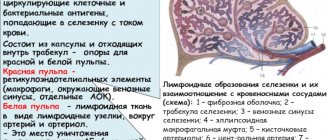In this article we will tell you:
- Classification of minerals
- The role of microelements in the human body
- Micronutrient intake standards for humans
- Signs of deficiency of important microelements in the body
- What are the dangers of excess microelements in the body?
- Foods containing essential micronutrients
- Replenishing the lack of microelements in the body
- Compatibility of microelements and vitamins
The role played by trace elements in the human body cannot be overestimated. They are present in bone tissue and tooth enamel, are one of the components of hemoglobin, and help in the functioning of the digestive system. What can I say - the lack of a single chemical element can have a detrimental effect on our health.
Today we live in an increasingly deteriorating environment. And if we add to this constant stress and frequent lack of necessary physical activity, then almost the only way out of the situation is good nutrition, that is, a correctly composed diet. And it should contain not only proteins, fats and carbohydrates, not only various kinds of vitamins, but also a whole range of useful minerals.
Classification of minerals
Minerals
– natural substances that make up rocks, ores, meteorites (from the Latin minera - ore). In bones, minerals are presented in the form of crystals, in soft tissues - in the form of a true or colloidal solution in combination, mainly with proteins.
- The first option is to divide 12 structural elements into groups: carbon, oxygen, hydrogen, nitrogen, calcium, magnesium, sodium, potassium, sulfur, phosphorus, fluorine and chlorine.
- 15 essential (vital): iron, iodine, copper, zinc, cobalt, chromium, molybdenum, nickel, vanadium, selenium, manganese, arsenic, fluorine, silicon, lithium.
- 2 conditionally essential elements: boron and bromine.
- “Candidates for necessity”: cadmium, lead, aluminum, rubidium.
- The remaining 48 elements are less significant for the body.
The second classification option, more suitable for a nutritionist:
- Macroelements. Contained in the body in large quantities. Sodium, potassium, calcium, phosphorus, iron, magnesium, chlorine, sulfur.
- Microelements. Their concentration in the body is low. These are zinc, iodine, fluorine, silicon, chromium, copper, manganese, cobalt, molybdenum, nickel, boron, bromine, arsenic, lead, tin, lithium, cadmium, vanadium, etc.
Rubidium
This is a rather little-studied element, often acting in the body as a potassium synergist (in other words, this element activates the same elements as potassium).
Benefits of rubidium
- Replacement of equivalent amounts of potassium in different processes.
- Elimination of allergies.
- Relieving inflammation.
- Calming the nervous system.
- Participation in the functioning of the respiratory tract, cardiovascular system, skin, smooth muscles and gastrointestinal tract.
Rubidium deficiency has the following consequences:
- development of mental illness;
- premature birth;
- decreased appetite;
- intrauterine growth retardation;
- significant reduction in life expectancy.
Despite the benefits of this element, one should not forget about the high toxicity of rubidium.
Signs of excess rubidium:
- development of allergies;
- headache;
- excretion of protein in the urine;
- arrhythmia;
- sleep disturbance;
- the appearance of skin irritations;
- chronic inflammation of the airways.
The role of microelements in the human body
Microelements
- mineral substances, the content of which in the body is measured in milligrams and micrograms. Microelements include: zinc, iodine, selenium, fluorine, silicon, chromium, copper, manganese, cobalt, molybdenum, nickel, boron, bromine, arsenic, lead, tin, lithium, cadmium, vanadium, etc.
The biological functions of many microelements, as well as their optimal values, are well studied. For example, iodine, copper, zinc, selenium, manganese. The subtleties of the functions of some other microelements have been studied to a lesser extent. Their possible toxic effects (at elevated concentrations) have been more studied. For example, aluminum, nickel, lead.
Among the many microelements in the body, only nine are essential, i.e. their imbalance leads to clinical symptoms. All the rest are non-essential - they are characterized by certain biological functions, but deficiency syndromes are unknown. Some of them are components of cells and tissues as a result of adaptation to the environment.
Essential
: zinc, iodine, chromium, cobalt (as a component of vitamin B 12), manganese, molybdenum, magnesium, copper, selenium and iron.
Non-essential
: boron, phosphorus, nickel, silicon and vanadium.
From the point of view of biological function, elements can be divided into 2 groups:
- Enzyme cofactors
(with activating, regulatory and structural-stabilizing functions); The essential elements of this group are zinc, magnesium, manganese, molybdenum, copper and iron.
- Components of molecules
(can be found in the bones of the skeleton, metabolic system, etc.); The essential elements of this group are iodine, chromium, cobalt and selenium.
The content of MCE in the body varies depending on the season and age. In particular, with age, the concentration of aluminum, titanium, cadmium, nickel, zinc, and lead in tissues increases, and the concentration of copper, manganese, molybdenum, and chromium decreases. The content of cobalt, nickel, and copper in the blood increases and the content of zinc decreases.
During pregnancy and lactation, the blood becomes 2-3 times more copper, manganese, titanium and aluminum. The smallest amount of microelements is in spring, the largest in autumn.
The functions of microelements are as follows:
- Ensuring normal acid-base balance.
- Participation in the processes of hematopoiesis, secretion and bone formation.
- Maintaining osmotic pressure at a constant level.
- Nerve conduction control.
- Establishment of intracellular respiration.
- Effect on the immune system.
- Ensuring full muscle contraction.
- They are part of hormones (iodine in thyroxine, zinc in insulin and sex hormones, etc.)222
We recommend
“The best courses in nutritionology abroad and in Russia” Read more
That is, despite their low concentration in the body, many microelements are the most important catalysts for various biochemical processes involved in all types of metabolism, and also play a significant role in the adaptation of the body under normal conditions and especially in pathology.
Potassium
Potassium is rightfully considered one of the most important intracellular elements necessary for the normal functioning of endocrine glands and muscles, capillaries and blood vessels, nerve cells, brain, kidneys and liver.
Benefits of potassium
- Promoting the accumulation of magnesium, which is responsible for the smooth functioning of the heart.
- Normalization of heart rate.
- Regulating the acid-base balance of the blood.
- Prevents the accumulation of sodium salts both in cells and in blood vessels, which prevents the development of sclerosis.
- Supplying the brain with oxygen, which increases mental activity.
- Decreased blood pressure.
- Removing toxins and waste.
- Increased endurance and physical strength.
- Helping to cure allergic diseases.
- Increasing the removal of excess fluid from the body, which helps eliminate swelling.
Potassium deficiency (or hypokalemia) is manifested by the following symptoms:
- disturbances in the functioning of the heart and skeletal muscles;
- decreased mental and physical activity;
- memory impairment;
- sleep disorders;
- nervous disorders;
- increased sensitivity;
- decreased immunity;
- loss of appetite;
- frequent constipation;
- skin rashes.
Most often, the leaching of potassium from the body is caused by the following phenomena:
- excessive consumption of diuretics;
- taking glucocorticosteroids that reduce potassium reserves;
- intense physical activity;
- prolonged vomiting or diarrhea;
- consuming large doses of caffeine or alcohol.
Excess potassium (or hyperkalemia) leads to weakness (both physical and mental), speech impairment, and small intestinal ulcers. In severe cases, hyperkalemia can cause cardiac arrest.
Important!
Excess potassium leads to calcium deficiency.
What foods contain potassium?
The daily requirement of potassium for an adult is about 2–5 g.
Food sources of potassium:
- dried fruits;
- melons (melon, watermelon);
- legumes;
- kiwi;
- chocolate;
- potato;
- avocado;
- bananas;
- fish;
- broccoli;
- liver;
- dairy products;
- mushrooms;
- nuts and offal;
- citrus;
- grape;
- cabbage;
- beet;
- seeds;
- mint;
- Jerusalem artichoke;
- a pineapple;
- blackberry;
- red pepper;
- leafy greens;
- radish;
- radish;
- garlic;
- tomatoes;
- black currant;
- honey;
- cucumbers;
- Apple vinegar;
- eggplant;
- cereals;
- meat and offal;
- corn;
- Brewer's yeast;
- horseradish;
- apricot;
- pumpkin;
- cocoa;
- cherry;
- plum;
- cottage cheese;
- pumpkin;
- blueberry;
- white mulberry;
- rose hip.
Important!
Vitamin B6 enhances the absorption of potassium, while alcohol hinders it.
Who needs to monitor their daily intake of microelements?
It is recommended for everyone, without exception, to maintain health and well-being. This is especially important for some categories of people:
- People actively involved in sports. Heavy physical activity exhausts the body, which means it is especially important for athletes to replenish energy and macronutrients.
- Persons who do not consume animal food. Vegans are a special risk group, since meat is an essential source of many nutrients that are essential for health.
- Children and elderly people.
- For those who experience high emotional stress.
- People who are constantly on diets.
- Pregnant women and women breastfeeding. Vitamins, minerals, macro- and microelements play a major role in maintaining health and well-being.
- People during periods of colds, as well as people suffering from chronic diseases.
- Persons with bad habits such as smoking and drinking alcohol.
- People on hormone therapy.
Micronutrient intake standards for humans
Scientists have long calculated how many microelements a person needs to consume. Their main sources can be either food or special vitamin-mineral complexes. In order for the body to function smoothly, it is important to replenish microelements on time. This ensures excellent health, good mood, high performance, and also allows you to delay old age and strengthen your immune system.
| Elements | Average daily requirement for adults* | Average daily requirement for pregnant and lactating women* | ||
| men | women | pregnant women | nursing | |
| Iodine | 200 mcg | 150 mcg | 230 mcg | 260 mcg |
| Fluorine | 3.8 mg | 3.1 mg | 3.1 mg | 3.1 mg |
| Zinc | 10.0 mg | 7.0 mg | 10.0 mg | 11.0 mg |
| Selenium | 30-70 mcg | 30-70 mcg | 30-70 mcg | 30-70 mcg |
| Copper | 1.0-1.5 mg | 1.0-1.5 mg | 1.0-1.5 mg | 1.0-1.5 mg |
| Manganese | 2.0-5.0 mg | 2.0-5.0 mg | 2.0-5.0 mg | 2.0-5.0 mg |
| Chromium | 30-100 mcg | 30-100 mcg | 30-100 mcg | 30-100 mcg |
* Average daily requirement for adults: men and women aged 25 to 51 years. The standards recommended by the German Society of Nutritionists (Deutsche Gesselschaft fur Ernahrung - DGE) are given. Data for pregnant and lactating women is also from this organization.
Signs of deficiency of important microelements in the body
There are several main reasons that provoke a lack of minerals in the human body, namely: incorrect approach to nutrition; consumption of poor quality water; living in an unfavorable region from a geological point of view; side effect of medications, etc. As we can see, there are many reasons - therefore, it is necessary to pay close attention to signs of a possible deficiency of nutrients in the body.
Zinc
Some signs of deficiency:
- Irritability, fatigue, memory loss, sleep disturbance.
- Hyperactivity.
- Decreased visual acuity.
- Loss of taste, mouth ulcers.
- Smell disorders.
- Loss of body weight, emaciation.
- Scaly skin rashes, acne, furunculosis, eczema, dermatitis, psoriasis, trophic ulcers, poor wound healing. Delamination of nails, appearance of white spots on them.
- Dull hair color, dandruff, slow growth, hair loss.
- Decreased insulin levels.
- Growth retardation, late puberty in children (especially boys).
- Decreased T-cell immunity, decreased resistance to infections (frequent and prolonged colds).
In addition to a poor diet, as well as impaired absorption of zinc in the intestines, a common cause of zinc deficiency is increased consumption during periods of increased demand in the body (for example, during pregnancy, breastfeeding, during wound healing and recovery from illness).
Iodine
Some signs of deficiency:
- Deviations in the production of thyroid hormones.
- Goiter formation.
- Swelling of the face, limbs and torso.
- High cholesterol levels.
- Bradycardia.
- Constipation.
- A sharp lag in mental and physical development;
- Short stature, skeletal deformities.
- Decreased fertility.
- Drowsiness.
In addition to a poor diet and impaired iodine metabolism, a common cause of iodine deficiency is increased background radiation and allergization of the body.
Copper
Some signs of deficiency:
- Inhibition of iron absorption, disruption of hemoglobin formation, inhibition of hematopoiesis.
- Deterioration of bone and connective tissue, impaired bone mineralization, osteoporosis, bone fractures.
- Increased predisposition to bronchial asthma, allergic dermatoses.
- Hair pigmentation disorder, vitiligo.
- Delayed sexual development in girls, menstrual dysfunction, decreased sexual desire in women, infertility.
- Suppression of immune system functions.
Targeted nutrition tips
that will increase your energy level by 10 out of 10
From TOP nutritionists of the MIIN
Get tips
In addition to a poor diet and impaired copper metabolism, a common cause of copper deficiency is long-term use of corticosteroids, non-steroidal anti-inflammatory drugs, and antibiotics.
Selenium
Some signs of deficiency:
- Poor hair growth or hair loss.
- Dystrophic changes in nails.
- Decreased immune defense of the body.
- Liver dysfunction.
- Failure of the reproductive system (mainly male infertility).
- Slow growth in children.
- Dermatitis, eczema.
In addition to a poor diet and impaired selenium metabolism, a frequent cause of deficiency is increased expenditure on neutralizing harmful substances.
Manganese
Some signs of deficiency:
- Fatigue, weakness, dizziness, bad mood.
- Deterioration of thinking processes, the ability to make quick decisions, memory loss.
- Violations of muscle contractile function, tendency to spasms and convulsions, muscle pain, movement disorders.
- Degenerative changes in joints, tendency to sprains and dislocations, osteoporosis during menopause.
- Skin pigmentation disorders, the appearance of small scaly rashes, vitiligo.
- Delayed growth of nails and hair.
- Decrease in the level of “good” cholesterol in the blood, impaired glucose tolerance, increase in excess weight, obesity.
In addition to poor diet and impaired manganese metabolism, a deficiency is often caused by increased consumption of manganese as a result of psycho-emotional overload in women during the premenopausal period and menopause.
Silicon
Some signs of deficiency:
- Weakness of connective tissue (bronchopulmonary system, ligaments, cartilage).
- Weakness of bone tissue (osteoporosis, susceptibility to fractures).
- Thinning, brittleness, hair loss.
- Tendency to inflammatory diseases of the stomach and intestines.
In addition to poor diet and impaired silicon metabolism, deficiency is often caused by increased consumption of silicon (rapid growth, physical overload).
Chlorine
This macronutrient regulates the water balance in the body, while performing a number of important functions, which we will discuss below.
The benefits of chlorine
- Removal of waste and toxins.
- Improves digestion by producing hydrochloric acid in the stomach.
- Improved liver function.
- Regulation of metabolism and acid-base balance.
- Elimination of edema.
- Increased appetite.
- Promoting the breakdown of fats.
Chlorine deficiency is manifested by decreased appetite, lethargy, memory loss, dry mouth and loss of taste. In severe cases, which are extremely rare, a lack of chlorine leads to hair and teeth loss.
An overdose of chlorine causes pain in the eyes, accompanied by watery eyes, a dry cough, and a rise in temperature (in severe cases, excess chlorine can cause pulmonary edema).
What foods contain chlorine?
The need for chlorine is fully satisfied by eating regular food, which contains an excess of table salt, which is the main source of chlorine in the body.
Important!
The toxicity of chlorine is manifested in a dose exceeding 15 g per day.
Main food sources of chlorine:
- salt;
- olives;
- eggs;
- seaweed;
- milk;
- cereals;
- bakery products;
- meat;
- condensed milk;
- mineral water.
What are the dangers of excess microelements in the body?
Few people know, but a surplus of vitamins and minerals is just as harmful as their deficiency. Drinking vitamin and mineral complexes “just in case” is a big mistake. Consuming excess amounts of micronutrients can lead to serious health problems, including death.
- Manganese
Excess manganese in the body causes irreparable harm to health. The norm is considered to be consumption of this element in an amount of up to 40 mg per day. If more enters the body, it leads to loss of appetite, hallucinations, decreased ability to work, muscle pain and atrophy, chronic fatigue, drowsiness, depressive disorders, and even damage to the pulmonary system.
- Iodine
An increased level of iodine in the body can cause hyperthyroidism, a serious endocrine disease characterized by weakness, unstable psychological state, and sweating. Also, with a large intake of iodine, body temperature rises in the absence of inflammatory processes. Other symptoms are persistent headaches, nausea, apathy and weakness.
Consuming iodine in amounts of 2-5 milligrams per day is considered detrimental to health, and a dose of 35-350 milligrams can lead to death.
- Silicon
If an excess amount of silicon accumulates in the body, it can cause the formation of kidney stones, as well as the death of lung tissue and abdominal organs. Urolithiasis can also develop due to excess silicon in the body. The fact is that it activates the formation of salts in the urine. And if silicon enters the body through the respiratory tract, it causes difficulty breathing and the development of silicosis.
Excess silicon is also dangerous because it contributes to the development of osteoporosis, atherosclerosis, and hair loss.
- Selenium
Consuming selenium in amounts of more than 5 milligrams per day is considered detrimental to health. In this case, depression, mood swings may develop, an unpleasant smell of garlic from the mouth and skin may appear, the condition of the liver will worsen, brittle nails, nausea and vomiting may occur.
- Copper
Excess copper in the body is extremely rare. If you are worried about muscle pain, fatigue, apathy, increased irritability, depressive thoughts, insomnia, you need to check whether there is an excess of this element.
Excess copper can form due to problems with metabolism, as well as as a result of poisoning. Copper can accumulate in the body if you smoke or if you are deficient in magnesium and zinc.
Certain processes in the body can increase copper reserves. For example, chronic kidney and bronchial diseases, cardiovascular diseases, schizophrenia. Excessive alcohol consumption can also accumulate copper. And this is not the entire list of reasons for the excess of this microelement.
Organize your diet correctly to avoid such problems.
- Zinc
If excess zinc accumulates in the body, this leads to deterioration of the hair and nails, interruptions in liver function, deterioration of the immune system, nausea, and disturbances in the functioning of the pancreas and prostate gland.
We recommend
“Nutritious nutrition for children: from infants to school graduates” Read more
- Fluorine
Too much fluoride intake can lead to problems with bones and teeth. Eating disorders and even damage to the central nervous system may also occur.
To avoid an excess of vitamins and minerals in the body, it is important to properly structure your diet.
References
- Seregina I. F., Lanskaya S. Yu., Okina O. I., Bolshov M. A., Lyapunov S. M., Chugunova O. L., Foktova A. S. Determination of chemical elements in biological fluids and diagnostic substrates children using mass spectrometry with inductively coupled plasma / Journal of Analytical Chemistry, 2010, volume 65, no. 9, p. 986-994.
- Barrett S. Commercial hair analysis: Science or scam. Journal of the American Medical Association. 1985, v.254, p.1041–1045.
- Skalny A.V. Chemical elements in human physiology and ecology. – M.: Publishing house “Onyx 21st century”: Mir, 2004, 216 p.
- Singh N, Gupta VK, Kumar A, Sharma B. Synergistic Effects of Heavy Metals and Pesticides in Living Systems. / Front Chem. 2017;5:70.
- Chen SX, Wiseman CL, Chakravartty D, Cole DC. Metal Concentrations in Newcomer Women and Environmental Exposures: A Scoping Review. / Int J Environ Res Public Health. 2021. 8;14(3)
Foods containing essential micronutrients
Zinc
Concentrated in the thymus gland, in the insular apparatus of the pancreas, and bone tissue. Necessary for cellular (tissue local) immunity of the skin and mucous membranes. Accelerates wound healing, prevents inflammatory skin diseases (acne, eczema, neurodermatitis, psoriasis, etc.). Contained in the insulin molecule and in the enzyme alcohol dehydrogenase. It decreases with an excess of refined carbohydrates and excess alcohol in the diet.
Zn content in 100 g of products:
- Oysters (100-400 mg).
- Pumpkin seeds (10).
- Wheat and rye bran (13).
- Beef, roe deer, lamb, elk, venison, horse meat (2-5).
- Birch leaf, celandine grass.
- Pine nuts (6.5).
Selenium
A trace element that is necessary for the synthesis of Se-dependent hydrolin peroxidase. Participates in the neutralization of more than 300 toxic substances and heavy metals in the body. Necessary for the deiodization reaction of thyroid hormones.
Se content in 100 g of products:
- Garlic (200-400 mcg).
- Salo (200-400 mcg).
- Wheat germ (110 mcg).
- Pine nuts (50 mcg).
- Coconut (810 mcg).
- Brazil nut (1910 mcg).
- Oregano, celandine.
- Golden root, Leuzea, ginseng.
- Porcini mushrooms (40 mcg).
Manganese
Part of cartilage and connective tissue. Necessary for insulin synthesis. Mn content in 100 g of products:
- Rye bread (1.5 mg).
- Buckwheat (1.5 mg).
- Horseradish (1.3 mg).
- Green tea.
- Wheat bran.
- Blueberries, blueberries, raspberries, chokeberries.
Chromium
A microelement that regulates carbohydrate metabolism, the activity of the heart muscle and blood vessels.
Cr content in 100 g of products:
- Tuna (90 mcg).
- Salmon (55 mcg).
- Mackerel (53 mcg).
- Herring (51 mcg).
- Beetroot (50 mcg).
- Shrimp (20 mcg).
- Quail eggs (14 mcg).
- Lentils (10.8 mcg)
Copper
Copper, like iron, plays a critical role in maintaining optimal blood composition, namely in the formation of hemoglobin. Moreover, iron accumulating in the liver will not be able to take part in the formation of hemoglobin without copper.
Food sources of copper:
- nuts;
- legumes;
- animal liver;
- potato;
- sprouted wheat;
- seafood;
- fish;
- dried fruits (especially prunes);
- chocolate;
- garlic;
- eggs;
- dairy products.
In general, copper is found in almost all iron-containing foods.
Fluorine
Fluorine is the main component of mineral metabolism. This microelement is responsible for the condition of bone tissue, the full formation of skeletal bones, as well as the condition and appearance of hair, nails, and teeth. Food sources of fluoride:
- tea;
- fish;
- mineral water;
- walnuts;
- cereals;
- Cod liver;
- spinach;
- beet;
- seafood;
- meat;
- milk.
We recommend
"Can food heal people: the power of good nutrition" Read more
Iodine
The main function of iodine is to ensure the synthesis of the thyroid hormone called thyroxine. In addition, iodine is actively involved in the creation of phagocytes, which are a kind of “patrol” cells that destroy debris and all kinds of foreign bodies directly in the cells. Iodine-containing products:
- sea salt;
- green vegetables;
- table iodized salt;
- ocean and sea fish;
- seafood, including seaweed and seaweed;
- onion;
- garlic;
- eggs;
- Cod liver;
- beans;
- beet;
- oriental spices (especially ginger, pepper, coriander, as well as cumin, cloves and turmeric);
- carrot;
- cabbage of different varieties;
- potato;
- tomatoes.
Silicon
Despite the fact that silicon is present in the blood in fairly small quantities, when its reserves decrease, a person begins to react sharply to weather changes (this can include mood swings, severe headaches, and a deterioration in mental state). Food sources of silicon:
- rice;
- oats;
- barley;
- soy;
- legumes;
- buckwheat;
- pasta;
- corn;
- nuts;
- eggs;
- fish caviar;
- green vegetables;
- seafood;
- dairy products;
- seeds;
- mushrooms.
In addition, silicon is found in grape juice, wine and beer.
Lead
Lead is considered one of the main pollutants of nature, but this does not prevent it from bringing certain benefits to the human body. Thus, lead, which accumulates mainly in bone tissue, is present in the body of an adult in an amount of 2 mg.
Benefits of Lead
- Helping improve growth as well as development.
- Ensuring metabolic processes occurring in bone tissue.
- Increase in hemoglobin content.
- Participation in iron metabolism.
In addition, lead is used in the treatment of skin diseases, tumor dermatitis and gonorrhea. But you should remember that lead is a poisonous metal that can cause poisoning.
Excess lead in the body can lead to the following serious problems:
- dystrophy of the muscles of the hands and pain in the limbs;
- general weakness and fatigue;
- decreased potency;
- deterioration of memory and mental activity;
- headaches;
- constipation;
- caries;
- increased blood pressure;
- weight loss;
- atherosclerosis;
- anemia;
- decreased immunity;
- depression.
Deficiency of this element is extremely rare, so there are no research data on its symptoms.
What foods contain lead?
The daily requirement for lead is about 10 - 15 mcg.
Important!
Doses exceeding 10 mg are most often fatal.
Plant foods contain more lead than animal foods.
Lead actively accumulates in cabbage, root vegetables (including potatoes), wheat bran, mushrooms (especially those growing near roads and industrial enterprises), seafood, fish (both fresh and frozen), gelatin, and canned food.
Replenishing the lack of microelements in the body
Why is mineral deficiency so critical for us? This is due to the functions of these substances in our body. Unlike vitamins, minerals are included in the structures of our body, in tissues, in tissue structure, bone tissue, connective tissue and many others, that is, to a certain extent, our body also consists of minerals.
They are also incredibly important for regulating cell activity, osmotic pressure inside the cell, electron transfer, and the transport of substances across cell membranes, all of which occurs using mineral ions.
Today we coexist with factors leading to shortages. Firstly, the low diversity of the diet is connected with our evolutionary path, including with the modern way of life, when a lot of things are on the run, there is not enough time for many things, especially for a varied diet, and accordingly the nutritional density of the diet decreases.
Secondly, it is believed that our needs for vitamins and minerals have developed on an evolutionary scale relatively recently. But in those times when our need was formed, people moved much more. Hunting, farming and much more led to the fact that energy consumption per day was approximately equal to 5 thousand kilocalories. Today the way of life has changed dramatically. Physical activity has decreased; accordingly, our average daily requirement is two and a half thousand kilocalories. The energy requirement is 2 times lower, but evolutionarily our metabolism, our biochemistry has not changed much over this short period. Accordingly, the internal needs for minerals have not changed either, that is, we need less food, but the same amount of minerals and vitamins. As a result of this, we eat less and receive less.
The next important factor is also related to our lifestyle - this is often increased consumption. For example, it is no secret that in situations of stress, deep emotions, as well as colds, our body requires and consumes many times more vitamin C and zinc. Do we replenish lost vitamins and minerals after such situations? Of course not.
How to detect deficiency in practice? Many symptoms overlap, for example, fatigue, irritability, insomnia. It's impossible to say exactly what caused it. Therefore, symptoms are used for primary analysis. But the most important tool for detecting deficiencies is laboratory tests.
In the modern world, experts recommend undergoing a general examination annually. It can be on different scales. The recommended minimum is a check-up for the content of minerals and mineral substances, vitamins, total protein and some related elements in the blood or blood serum.
Accordingly, if a person does not have the opportunity to undergo a full check-up, then indirect signs of deficits are used, which help to at least understand the direction in which to dig.
Important point
. As a result of the analysis, we see a column of the normal range, from which to which value of the element content is considered normal. But in the integrative approach, the term has long been used not as a norm, but as an optimum. The optimum is different from the norm.
Take, for example, zinc, one of the most important and essential microelements. For example, the laboratory norm for zinc is from 75 to 120 micrograms per deciliter, but the optimum is the value at which the human body works optimally, as efficiently as possible, in terms of health and general condition. And now the optimum value for zinc is above 85. The norm is something quite average, already established for a long time. The optimum is from modern practices of the integrative approach.
The main point in the protocol for restoring deficits is working with the diet
. Even if we see a deep deficiency that will be restored with drugs, dietary supplements and a specialist, then after we overcome this deficiency, our obligatory task is to give a person recommendations on enriching the diet with specific products.
We recommend
“We count nutrients, not calories” Read more
When talking about the replenishment protocol, it is important to distinguish between preventative doses of minerals. They are used when there is no deficiency yet, when laboratory values, for example, are within the optimum, then on a preventive basis it is recommended to take preventive doses with a certain frequency, taking into account that in the modern world products may be deprived of the necessary elements.
The second concept is replenishment doses
. These are higher doses that can be taken and prescribed only after tests have revealed a deep deficiency, only within the framework of a general protocol for a certain period, with cofactors that help absorption. This is a direct protocol for getting out of a deep deficit
With a deep deficiency, the body may not have enough resources to absorb even this, so it is important to know the situation and use a good and necessary dosage.
Mercury
Mercury (this element is also called the “metal of death”) is a component of water, soil and air, and, therefore, it is also present in the human body, although in extremely small quantities.
But everything is as scary as it seems at first glance, because mercury also has beneficial properties, including:
- tissue change and restoration;
- stimulation of intelligence;
- awakening of consciousness.
Important!
As a therapeutic agent, mercury is taken exclusively as prescribed by a doctor and under his supervision, but it is important to remember that this metal is not used in its pure form, but only in combination with sulfur.
Important!
Small doses of mercury coming from food do not accumulate in the human body, but are mainly eliminated from it through the kidneys, colon, bile, sweat and saliva. Although daily consumption of foods containing mercury (especially fish) may have some toxic effects.
Particularly dangerous are mercury vapors, as well as organic derivatives of this metal formed in the aquatic environment under the influence of microorganisms. Particularly dangerous are areas with operating heavy industrial enterprises that are not equipped with modern treatment facilities. In such areas, the environment in general and people in particular are slowly but surely being poisoned by mercury vapor.
At the same time, mercury poisoning (we are not talking about cases of acute intoxication provoked by massive intake of mercury into the body) does not manifest itself for a long time, that is, it is asymptomatic.
Over time, the following symptoms of intoxication begin to appear:
- headache;
- dizziness;
- deterioration of memory and attention;
- inflammation of the gums;
- mild nausea;
- insomnia;
- hair loss.
A little more time passes, and the state of health worsens, which manifests itself:
- speech impairment;
- the appearance of causeless fear and nervousness;
- drowsiness;
- decrease in white blood cell count.
If these symptoms appear, you should immediately consult a doctor (especially if you live in an industrial area).
What foods contain mercury?
The average permissible rate of mercury in food is about 0.5 – 1 mg of this element per kilogram of food.
Mercury in minimal quantities that are not capable of causing poisoning is present in many food products - bread, flour, and canned food. But the most mercury is in fish (especially mackerel, tuna, swordfish). Therefore, fish is not recommended to be consumed daily.








